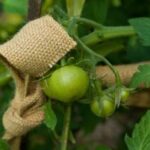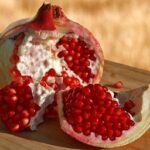Just about every fruit contains a fair amount of fibre within it.
Just how much does each fruit contain though?
This short article will divide the common fruits into four categories for easy reference.
Those fruits that are high in fibre, those that are medium to high, those low to medium, and finally those fruits that are low in their fibre content.
The measurements are based on a similar sized serving of each fruit, and in the case of apples includes also the skin. The fruits are generally raw, uncooked and fresh.
Dietary fibre comes from the structural elements of the plant and the proportion of fibre varies in each plant. They are generally types of carbohydrate that our body doesn’t digest or absorb. A certain amount of fibre in our diet maintains our regularity and assists our digestive process and is good for our general health and well being as well as actively reducing the risks of a lot of common lifestyle type diseases. These include heart disease, diabetes and cancer.
Increased fibre intake is also very useful in a weight control program.
There are two types of fibre, soluble and insoluble. This simply means if it dissolves in water or not. Insoluble fibre known as roughage or bulk is the best type for alleviating constipation. It increases the volume of stools excreted, and helps the passage of foods moving through the digestive system.
Soluble fibre improves cholesterol and blood sugar levels by slowing down their absorption. Citrus fruits contain soluble fibre, as well as apples, pears and strawberries. Fruits with edible seeds such as all of the berries contain insoluble fibre. Fruits eaten with their peel also contain this type of fibre, (such as apples, pears, peaches, nectarines and plums).
HIGH IN FIBRE FRUITS
Blueberry, Blackberry, Boysenberry, Raspberry, Loganberries.
Dried Fruits such as: Dates, Raisins, Sultanas, Figs, Dried Apricots, Dried Prunes.
Nashi Pear
MEDIUM TO HIGH FIBRE FRUITS
Avocado
Apple
Banana
Cranberry
Guava
Gooseberry
Mulberry
Passion Fruit
Paw Paw
Pear
Pomegranate
LOW TO MEDIUM FIBRE FRUITS
Acai Berries
Apricot
Cherry
Grapefruit
Grapes
Kiwi Fruit
Honeydew Melon
Kumquat
Lemon
Lychee
Mandarine
Nectarine
Orange
Peach
Pineapple
Plum
Strawberry
Tangerine
LOW FIBRE FRUITS
Cantaloupe
Lime
Mango
Olive
Papaya
Persimmon
Water Melon
Most people probably do not eat enough dietary fibre. It is generally recommended that we consume around 20-25 grams of fibre daily.
The higher fibre fruits listed here all contain around 6 to 14 grams per serving size of 100 grams of the fruit. One hundred grams is about one cupful of berries or dried fruit, or one medium size piece of whole fruit, such as an apple or a pear.
The medium to high fibre group contain around 3 to 6 grams per average serve. The low to medium fibre group contains only 1 to 3 grams per serve, and the last low fibre group that I have included here contain less than 1 gram of fibre per 100 grams of fruit.
This all means that to get your daily fibre intake right from only consuming fruit, you would need probably five or six servings of fruit each day. Of course fibre also comes from grains, and nuts and other foods. A well balanced diet consists of a good mix of all of these types of foods.
Most good nutritionists will advise to have 2 or 3 servings of fruit, and 2 or 3 servings of vegetables every day. It depends on your age, and your lifestyle as well of course. Someone that is particularly active might up this to four servings of fruit, and five servings of vegetables each day.
A serve of fresh fruit is usually one medium sized piece, or about half a cup of a smaller sized fruit such as berries or grapes. A serve of dried fruit is more concentrated and so is smaller in its size, about one quarter of a cup would amount to one serve in this case.
It is hard to overdose on fruit however, unless you have an underlying existing health problem such as diabetes. You should always confirm all of these new types of ideas with your doctor when this is the case. Diabetics have to be particularly careful to more accurately measure their food intake, and the proportions of each type of food that they eat in their diets.
In general fruits are stocked full with all manor of vitamins, minerals and fibre and are ideal to consume as much as 4-5 servings each day. Our body can easily process and absorb the vitamins and minerals coming from fresh fruit.
Fibre was once considered to be an inert or inactive part of our food. It passed undigested from our mouth through to our anus, and it was all expelled still intact in the stool. The term ‘fibre’ these days encompasses much more.
Complex carbohydrates, natural polymers like cellulose and woody plant lignin, pectin and various gums (arabic, agar, carrageen and guar), psyllium (seed husks from a certain plant), and many other substances not yet identified are all now identified as being fibres.
Something thought to do nothing is now seen to do so much more. Insoluble fibre makes our stools heavier. This fibre swells up by absorbing fluids, and helps us to overcome constipation problems. Soluble fibre has been claimed to reduce cholesterol absorption and lessens the incidence of heart disease.
Conclusion:
Make sure you get your fibre naturally by eating more fresh fruit, and drinking less fruit juice in which the fibre or pulp has usually been all but removed.




